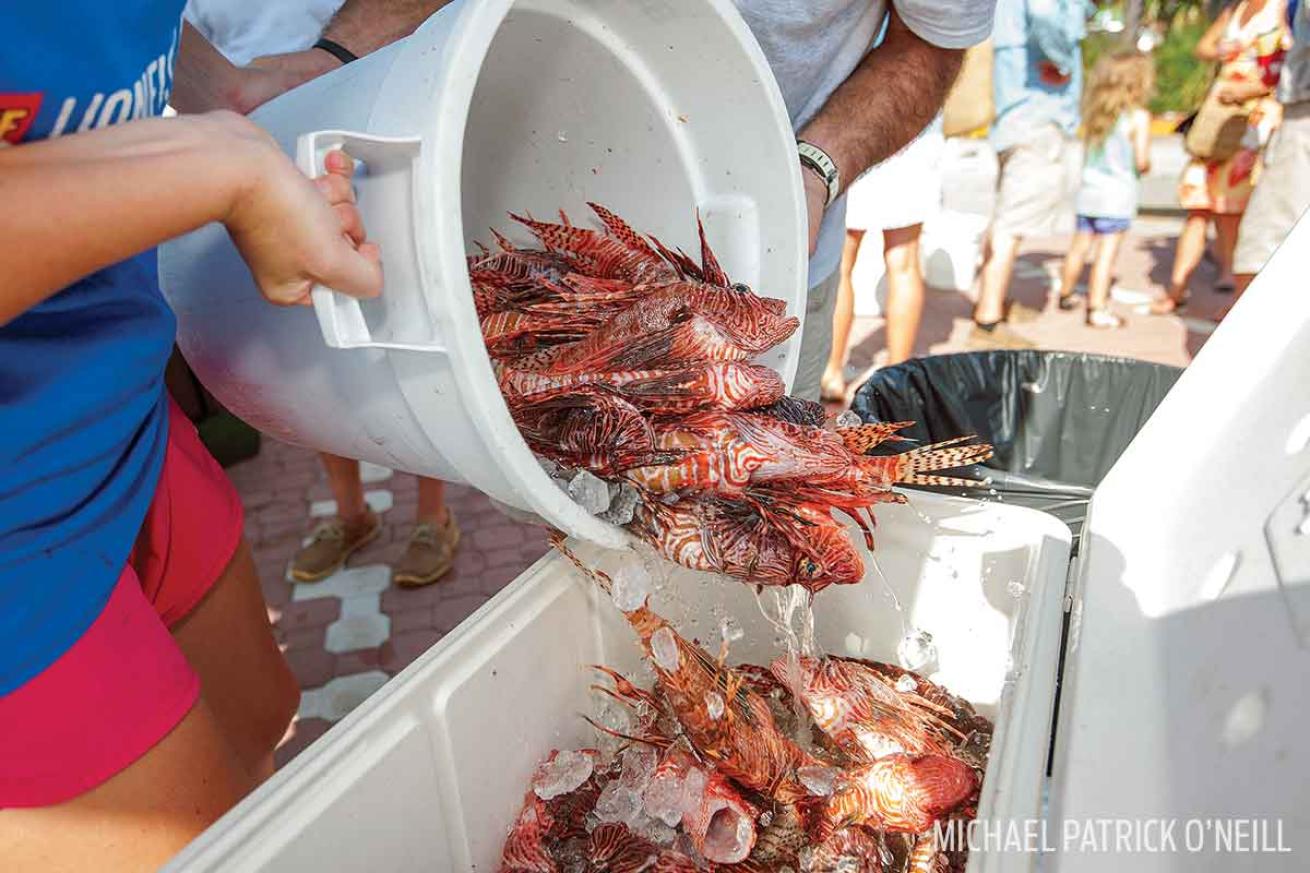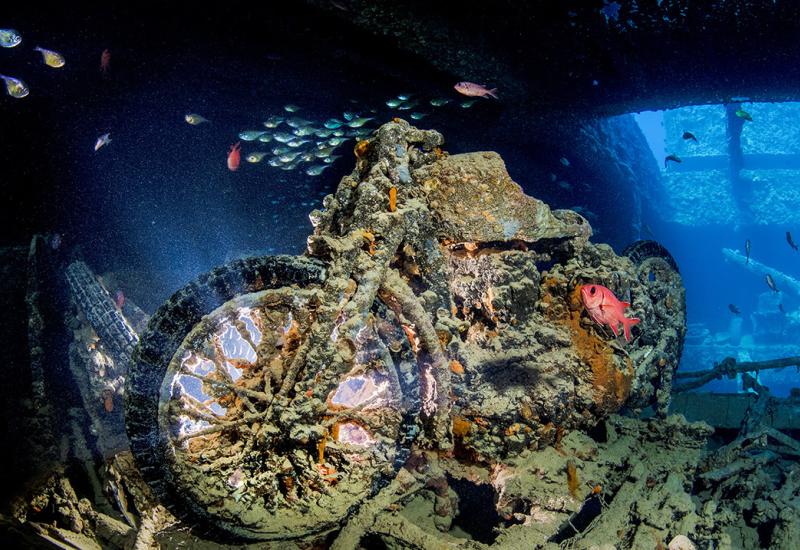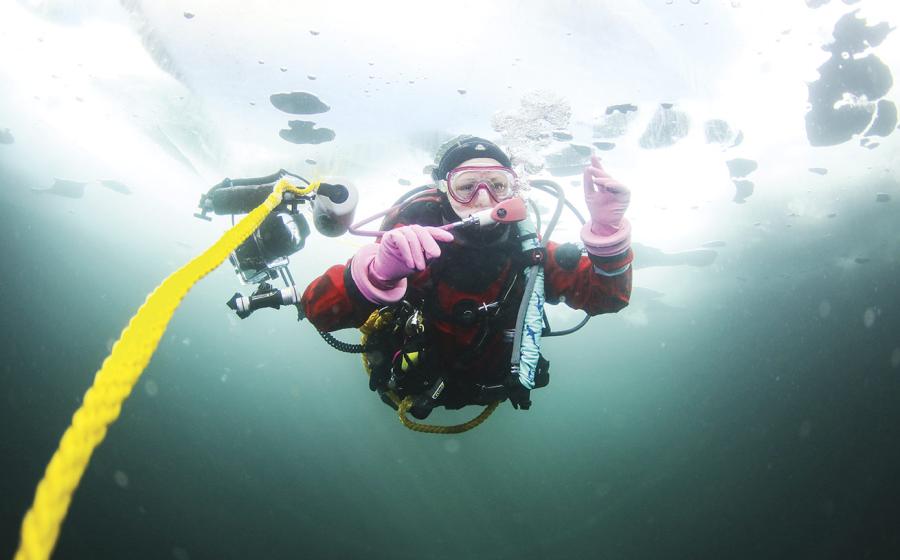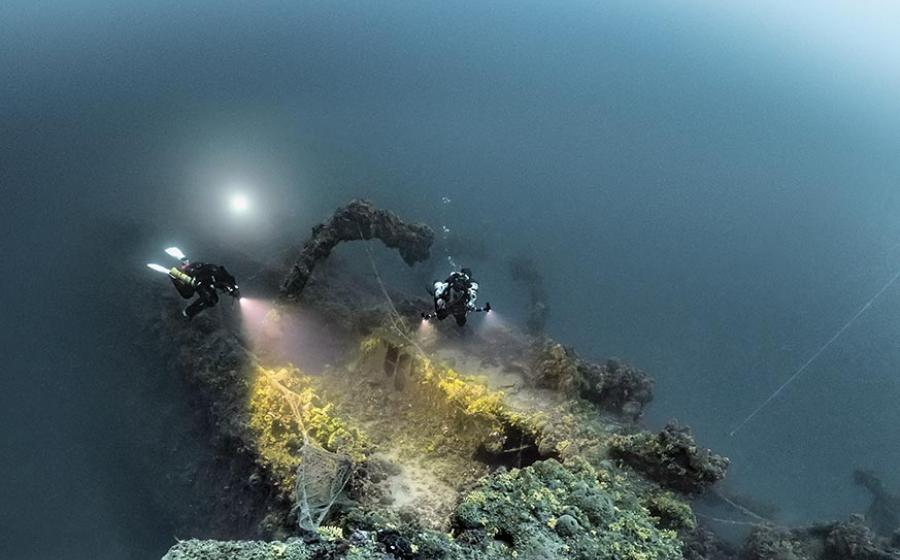In Fight Against Invasive Lionfish, Willing Divers and Big Appetites are Needed

Michael Patrick O'Neill/OceanwideImages.comDivers measure out their catch during a lionfish derby hosted by REEF.
The first time Lad Akins was served lionfish, he paused to carefully examine the other taste tester.
“When they didn’t keel over, I said ‘Well let me have a taste,’ ” says Akins, with a laugh. “It was really good. We realized then that this is an edible fish, and that could be a way to address the invasion.”
The invasion that Akins, director of special projects at the Reef Environmental Education Foundation, refers to is well documented. While the venomous lionfish is beautiful, it is not native to Caribbean or western Atlantic waters. And thanks to its predatory nature and rapid reproduction, the lionfish has gone from pesky invasive species to big problem as it feasts on native juvenile fish.
But just as quickly as a lionfish will snatch up a juvenile grouper off the coast of Florida, folks inland at the Flora-Bama Yacht Club in Pensacola will clean off a plate of blackened lionfish for dinner. “The first time I cooked lionfish, I was shocked by how white, buttery and flaky it was,” says Chris Sherrill, chef at the Yacht Club. “It lends itself to a wide variety of cooking styles: blackened, grilled, even raw in a ceviche.”
• Try it out! Lionfish nachos recipe
And better yet: lionfish are higher in Omega 3 fats and have a better ratio of Omega 3 to Omega 6 than other commonly eaten western Atlantic fish, according to a 2011 REEF study.
Sherrill finds himself on the front line of the fight against the invasive species. As president of the NUISANCE Group, an organization that works to raise awareness of underutilized and invasive species through sustainable culinary endeavors on Alabama’s gulf coast, and a chef who can cook up a darn-good lionfish dish, Sherrill hopes for a future that includes the pesky predator on every menu for an affordable price.
But there lies the problem.
Without an easy way to retrieve the fish – the only effective way is for divers or snorkelers to remove them one by one – the going price is simply too high for chefs like Sherrill to put lionfish on the menu with regularity. He estimates that a lionfish plate done right should sell for about $45. Florida Whole Foods Markets sell the filleted fish for $29.99 per pound when in supply.
“People come by and say, ‘Wait a minute, we have an invasive fish that we’re trying to get rid of, but you’re making it a delicacy and selling it at this price?’ ” says Sherrill. “We can’t just tell them it’s more expensive because divers have to go down and get them one by one. We need to do stewardship; we need to do our part.”
REEF and the NUISANCE Group put on lionfish derbies, culinary competitions and education events. Sherrill even hosts lionfish nights at the Yacht Club, where they sell dishes under their value to let people try the fish and become advocates.
“As long as capitalism rings true – and we love capitalism – but there are just some times we need to step back and say, ‘Can I make a difference in this world?’ We need divers to want to do this not just for a huge profit,” says Sherrill.
• Video: New Autonomous Robot Can Target Reef-Killing Crown-of-Thorns Starfish
One day, a special net or unmanned submersible may be invented to help curb the growth of the lionfish population, or a natural predator may find a way to feast on the fish while avoiding their venomous spines. But now, Sherrill says it’s up to divers, spearfishers and the communities that will ultimately be affected by the destructive species to do their part.
“Asking your restaurants to put them on the menu is all well and good, but at some point we need to come up with a reasonable and affordable way to serve them,” says Chandra Wright, co-founder of the NUISANCE Group and nature tourism specialist at the Mississippi-Alabama Sea Grant. “Until we find a commercially feasible way to harvest lionfish, the solution is that we need more divers spearing and either donating them or selling them at a reasonable cost.”
With the right training, everyone can help.
“If properly trained and equipped, divers can remove lionfish on their own. Not necessarily to become commercial fishermen, but to take home and consume,” says Akins. “Every lionfish that comes out of the water is one less that is out there causing damage.”










